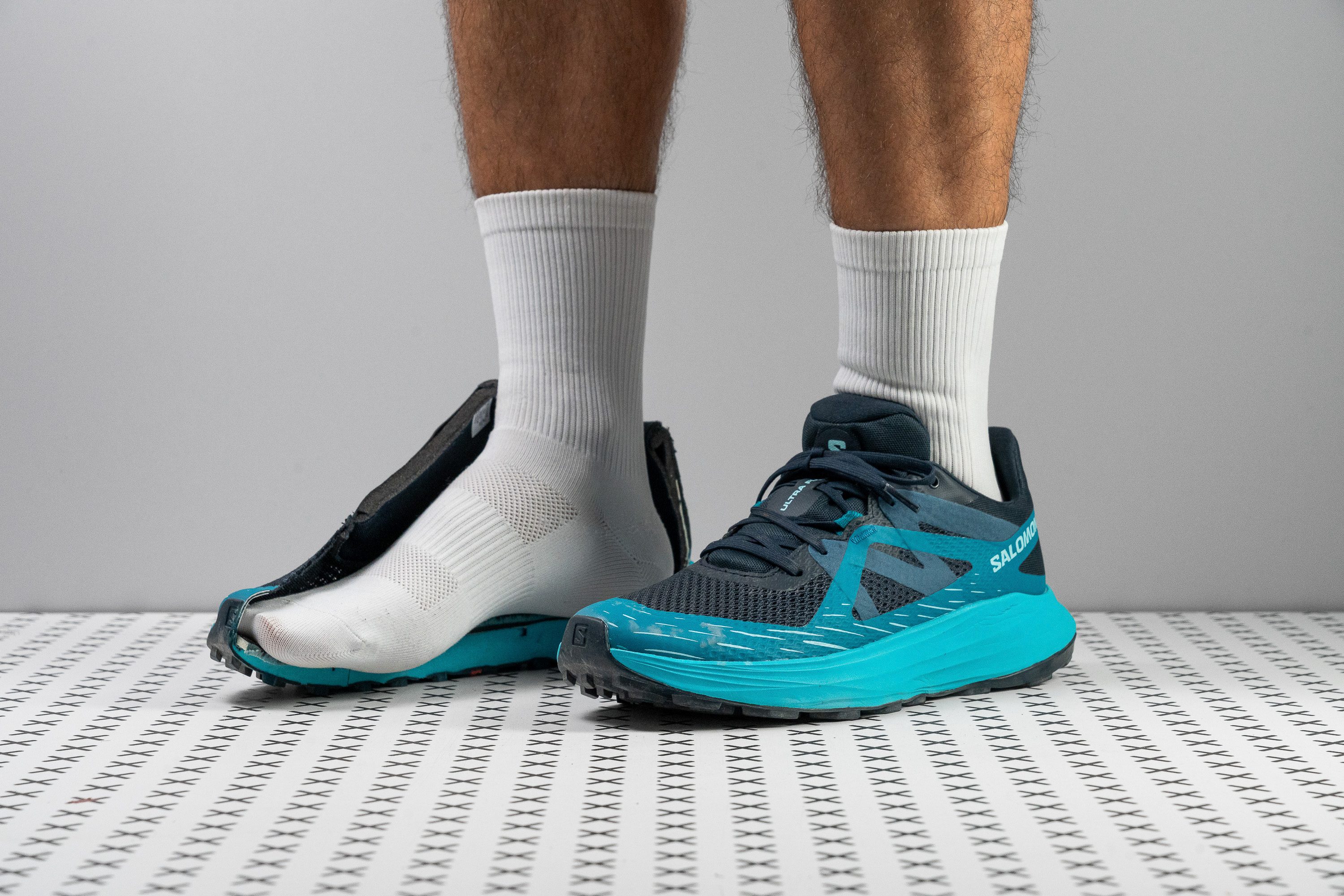Our verdict
Pros
- Lightweight build
- High-value pricing
- Agile and quick-turning ride
- Flexible build
- Breathable yet rugged upper
- Versatile door-to-trail capability
- Stable enough for heel strikers
- Fun to ride!
Cons
- Misleading official drop
- Narrow forefoot fit
- Not for long distances
Audience verdict
Comparison
The most similar running shoes compared
+ + Add a shoe | |||||
|---|---|---|---|---|---|
| Audience score | 83 Good! | 89 Great! | 89 Great! | 86 Good! | |
| Price | $120 | $150 | $110 | $150 | |
| Trail terrain | Light | Light | Light | LightModerate | |
| Shock absorption | Moderate | High | - | Moderate | |
| Energy return | Moderate | Moderate | - | Moderate | |
| Arch support | Neutral | Neutral | Neutral | Neutral | |
| Weight lab Weight brand | 9.1 oz / 258g 8.6 oz / 244g | 10.1 oz / 286g 10.1 oz / 286g | 9.6 oz / 271g 10.6 oz / 300g | 10.1 oz / 286g 9.2 oz / 260g | |
| Drop lab Drop brand | 12.5 mm 6.0 mm | 9.6 mm 9.5 mm | 13.5 mm 10.0 mm | 7.2 mm 6.0 mm | |
| Strike pattern | Heel | HeelMid/forefoot | Heel | Mid/forefoot | |
| Size | True to size | True to size | True to size | True to size | |
| Midsole softness | Soft | Soft | Balanced | Soft | |
| Difference in midsole softness in cold | Normal | Normal | Normal | Big | |
| Toebox durability | Good | Very good | Good | Bad | |
| Heel padding durability | Decent | Good | Good | - | |
| Outsole durability | Decent | Good | Good | - | |
| Breathability | Moderate | Warm | Warm | Moderate | |
| Width / fit | Medium | Medium | Medium | Narrow | |
| Toebox width | Medium | Medium | Medium | Narrow | |
| Stiffness | Moderate | Moderate | Moderate | Moderate | |
| Torsional rigidity | Stiff | Moderate | Stiff | Flexible | |
| Heel counter stiffness | Stiff | Stiff | Moderate | Moderate | |
| Lug depth | 2.8 mm | 3.2 mm | 2.9 mm | 2.8 mm | |
| Heel stack lab Heel stack brand | 34.9 mm 32.0 mm | 34.6 mm 37.0 mm | 32.6 mm 29.0 mm | 30.6 mm 32.0 mm | |
| Forefoot lab Forefoot brand | 22.4 mm 26.0 mm | 25.0 mm 27.5 mm | 19.1 mm 19.0 mm | 23.4 mm 26.0 mm | |
| Widths available | Normal | NormalWideX-Wide | NormalWide | Normal | |
| Season | All seasons | All seasons | All seasons | All seasons | |
| Removable insole | ✓ | ✓ | ✓ | ✗ | |
| Orthotic friendly | ✓ | ✓ | ✓ | ✗ | |
| Ranking | #272 Bottom 26% | #72 Top 20% | #91 Top 25% | #176 Top 48% | |
| Popularity | #287 Bottom 22% | #48 Top 13% | #308 Bottom 16% | #182 Top 50% |
Who should buy
The Salomon Ultra Flow is a great choice for:
- Runners seeking an affordable shoe that can handle occasional hikes, light trail runs, some road miles, and even your next weekly trip!
- Those who dislike bulky, maximalist trail shoes and prefer something fun and agile.
- Trail runners with narrow feet who want a shoe for easy or mixed terrain.

Who should NOT buy
We think the snug fit of the Salomon Ultra Flow makes it less suitable for runners with wide feet. In our experience, the narrow toebox limits comfort on longer runs, and we believe there are better choices for those needing extra room, like the Altra Experience Wild or the Topo Ultraventure 4.
Additionally, we believe the Ultra Flow’s steep drop can feel uncomfortable for midfoot or forefoot strikers who prefer a lower offset. Based on our findings, we recommend alternatives such as the Hoka Speedgoat 6 or the Saucony Xodus Ultra 3.
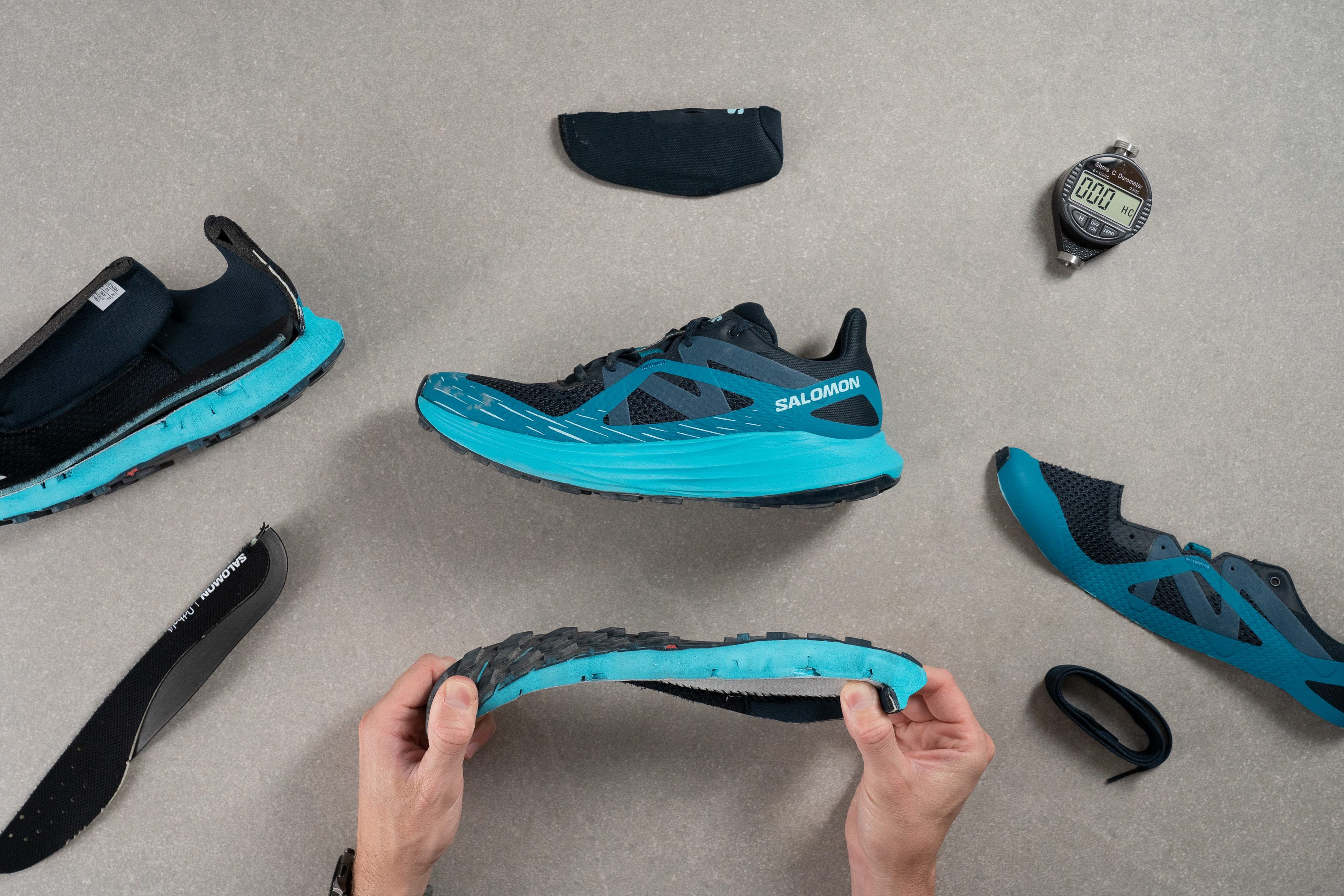
Cushioning
Shock absorption
The Ultra Flow is far from the modern trail shoes that disconnect you from the terrain. With just 118 SA in the heel and a notably low 81 SA in the forefoot in our shock absorption test, it’s perfect for runners who enjoy a touch of ground feel without complete isolation.
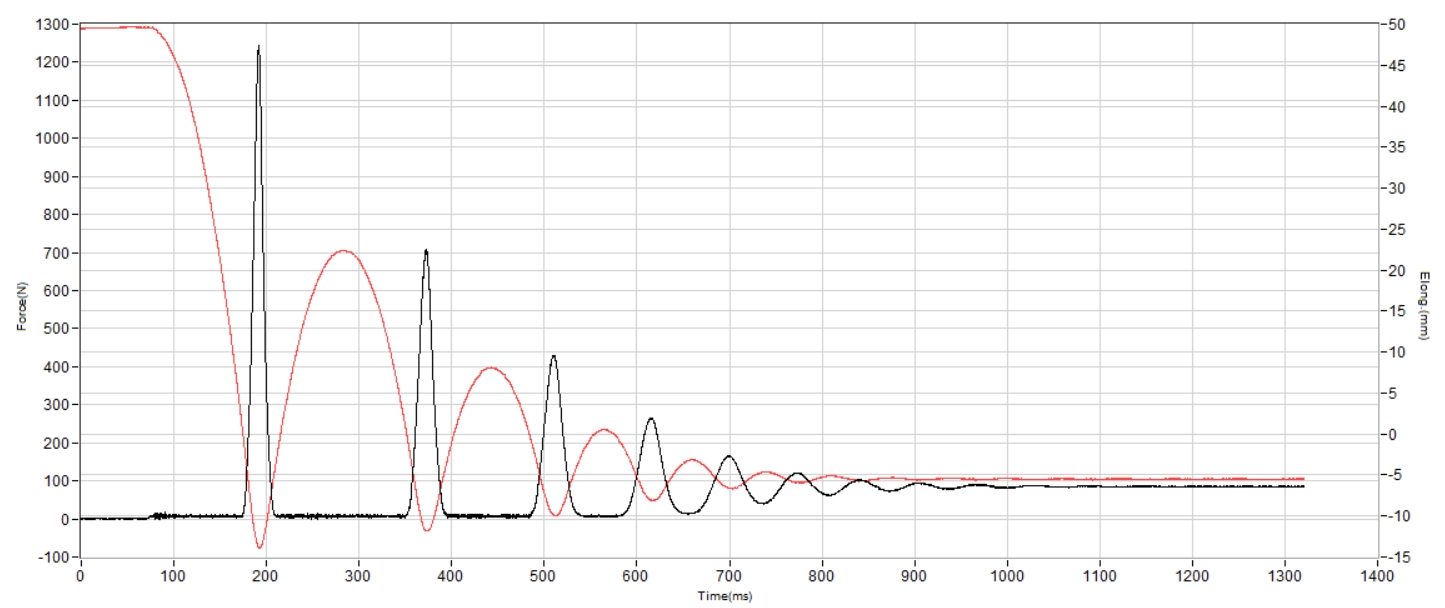
| Ultra Flow | 118 SA |
| Average | 122 SA |
Energy return
Energy return is far from impressive, sitting at 57.7%, which is right around the average. However, considering the Ultra Flow’s reasonable price, we believe this result is more than acceptable.
| Ultra Flow | 57.7% |
| Average | 55.6% |
Heel stack
We measured the Ultra Flow with a heel stack height of 34.6 mm, which was surprising since the shoe appears thinner before being cut in half. This is exactly why dissecting running shoes is essential to uncover every detail.
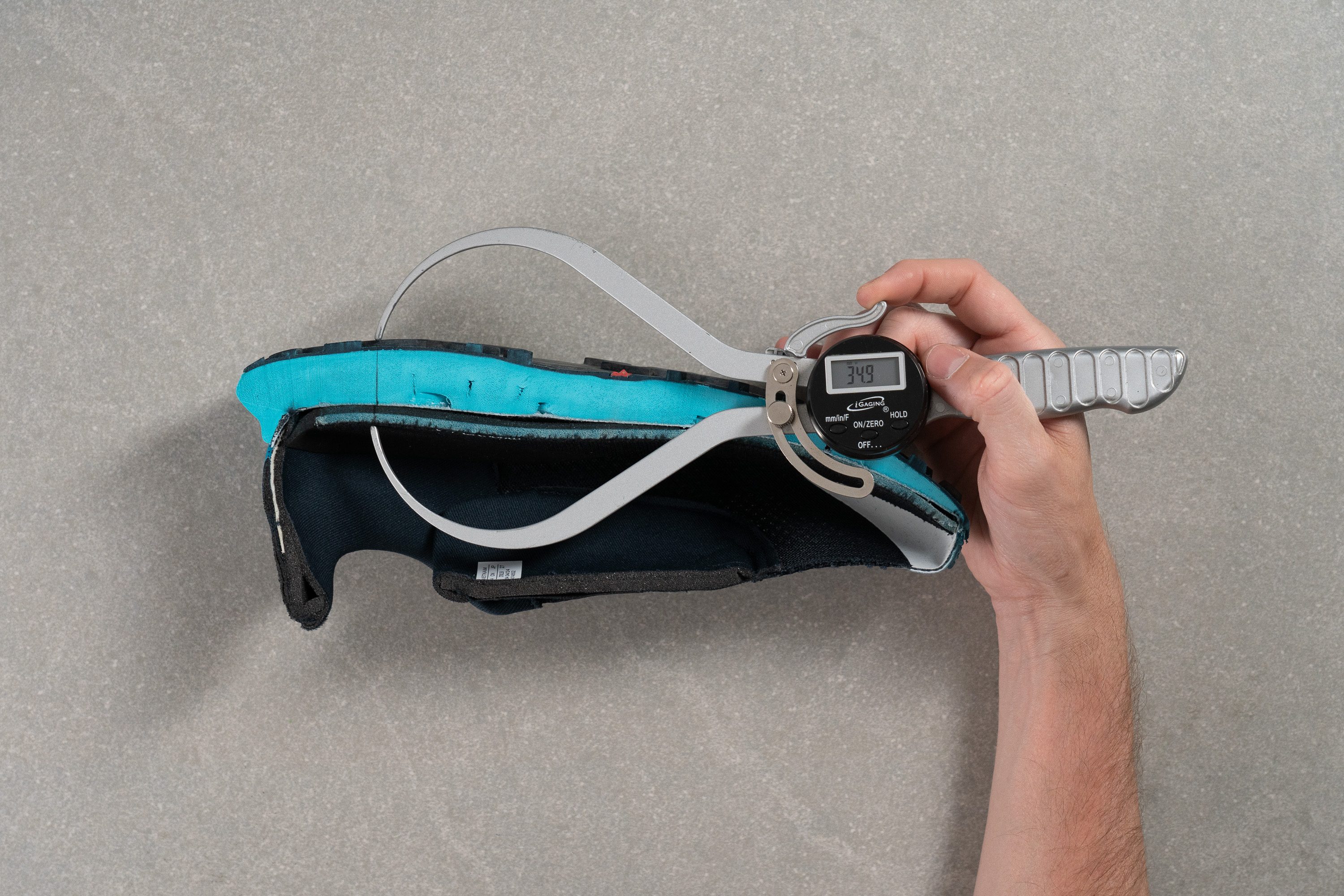
| Ultra Flow | 34.9 mm |
| Average | 32.6 mm |
Forefoot stack
The forefoot is the complete opposite of the heel, coming in below the lab average at 22.4 mm. This is obvious even when walking, as it feels noticeably less cushioned up front, and when running, you can clearly feel the ground as you pick up the pace.
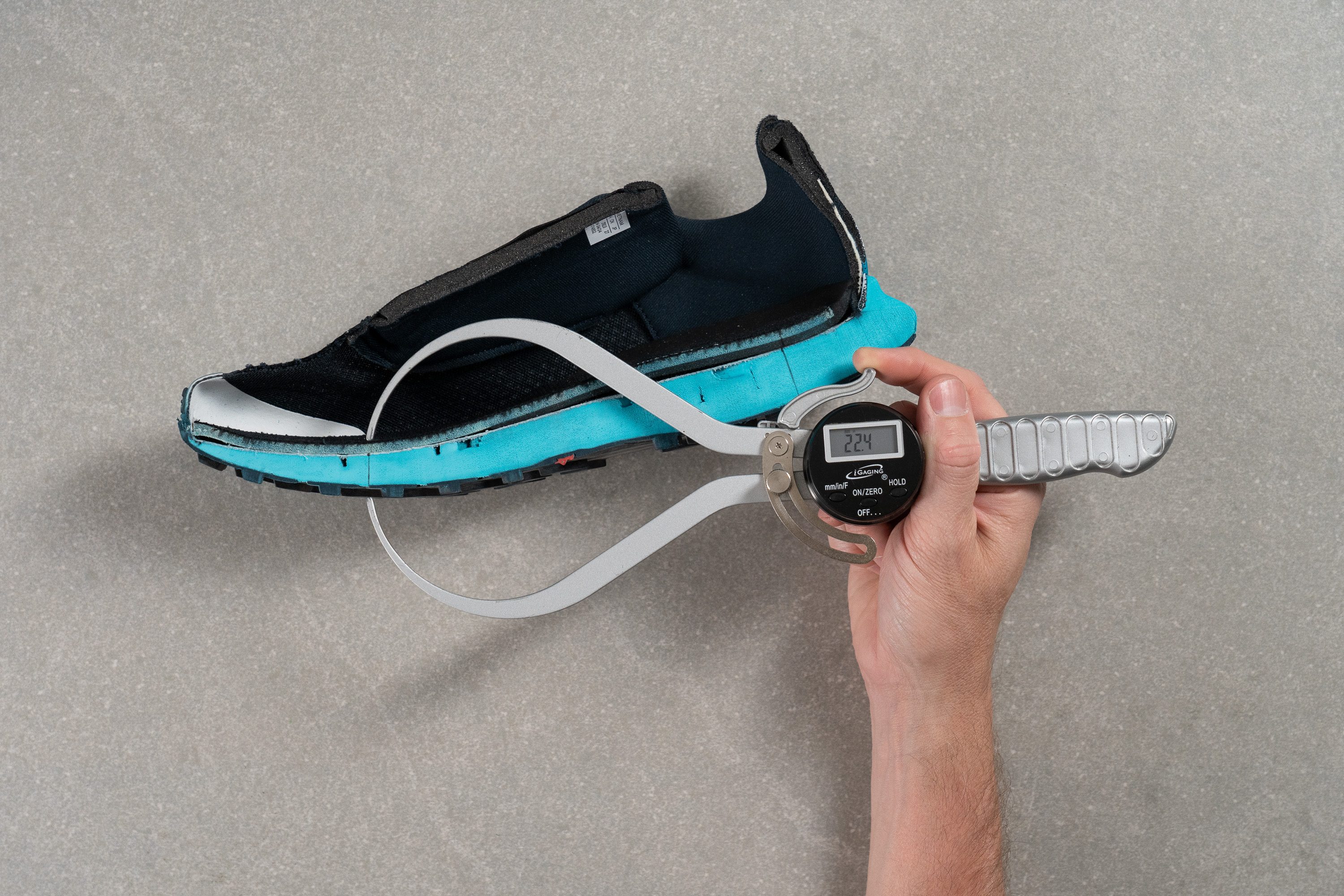
| Ultra Flow | 22.4 mm |
| Average | 25.1 mm |
Drop
Salomon claims a 6 mm drop, but just by looking at our photo, it’s clear that this isn’t accurate. We measured 12.5 mm (more than double!) which likely stems from Salomon not using the official World Athletics reference points for the heel and forefoot.
The feel on the run confirms this too: the shoe is noticeably steeper than 6 mm and feels more tailored to heel strikers.
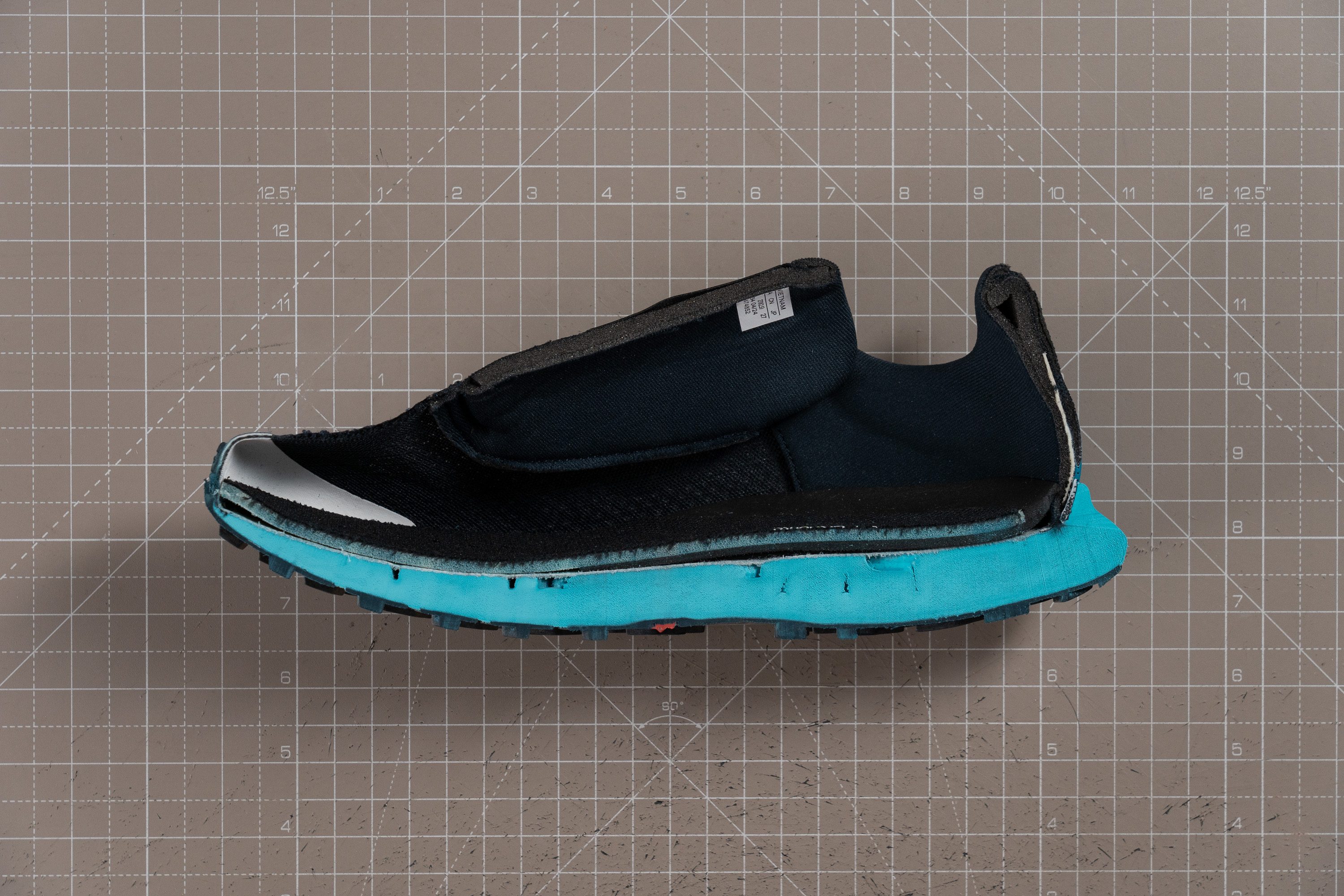
| Ultra Flow | 12.5 mm |
| Average | 7.6 mm |
Midsole softness
This shoe is a great reminder of why honest reviews and fair comparisons (not marketing) matter. Salomon describes the Ultra Flow as “ultra plush” on its product page, but in reality, that’s not the case.
With a 18.4 HA reading, it feels more like an average midsole, neither too plush nor too firm. And that’s perfectly fine, especially for a trail shoe where too much softness can lead to instability.
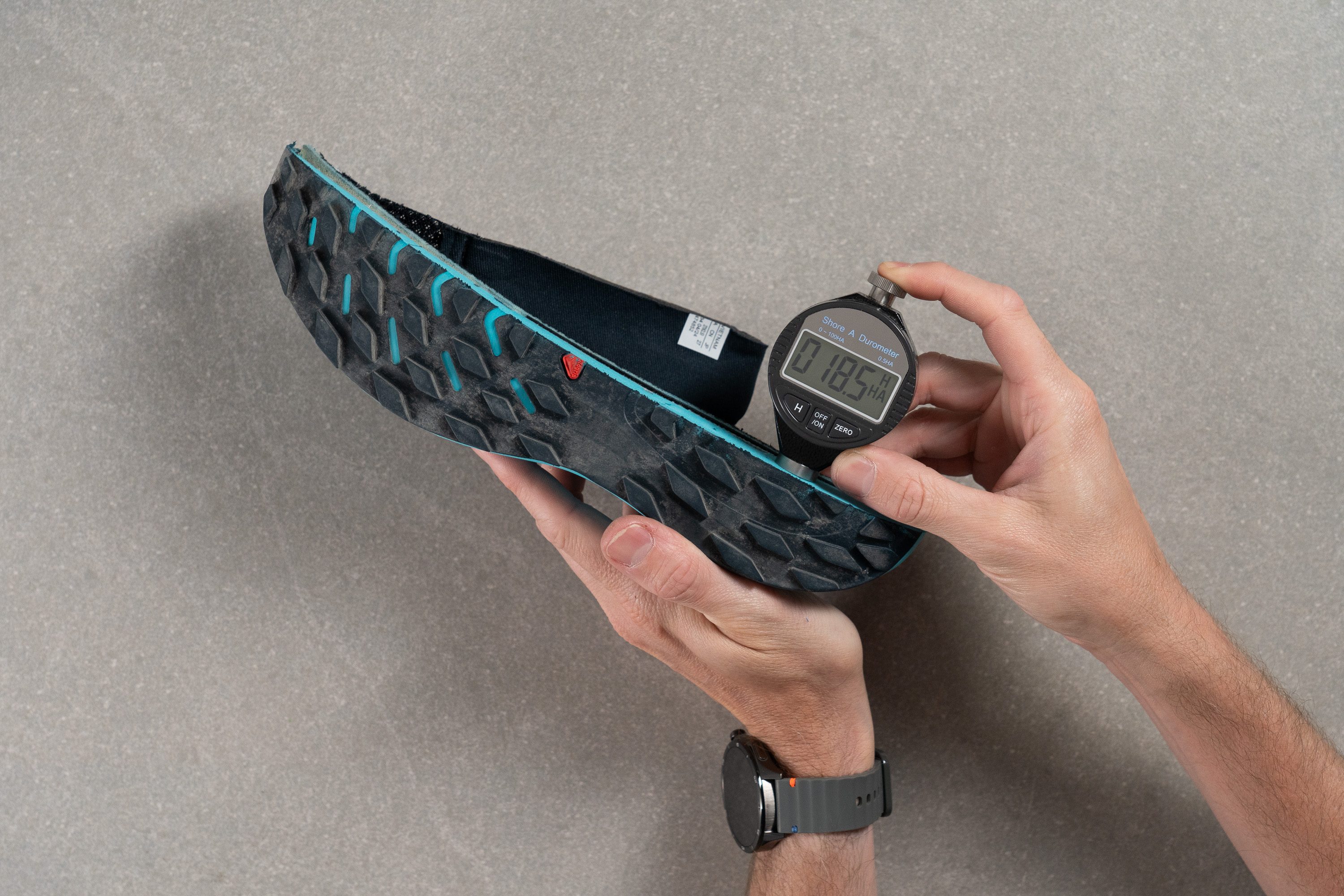
| Ultra Flow | 18.4 HA |
| Average | 21.9 HA |
Rocker
The Ultra Flow doesn’t feature a maximalist stack height, yet Salomon still equipped it with a noticeably rockered midsole. With a pronounced curve in both the heel and forefoot, it’s best suited for runners who enjoy this type of geometry in their trail shoes.
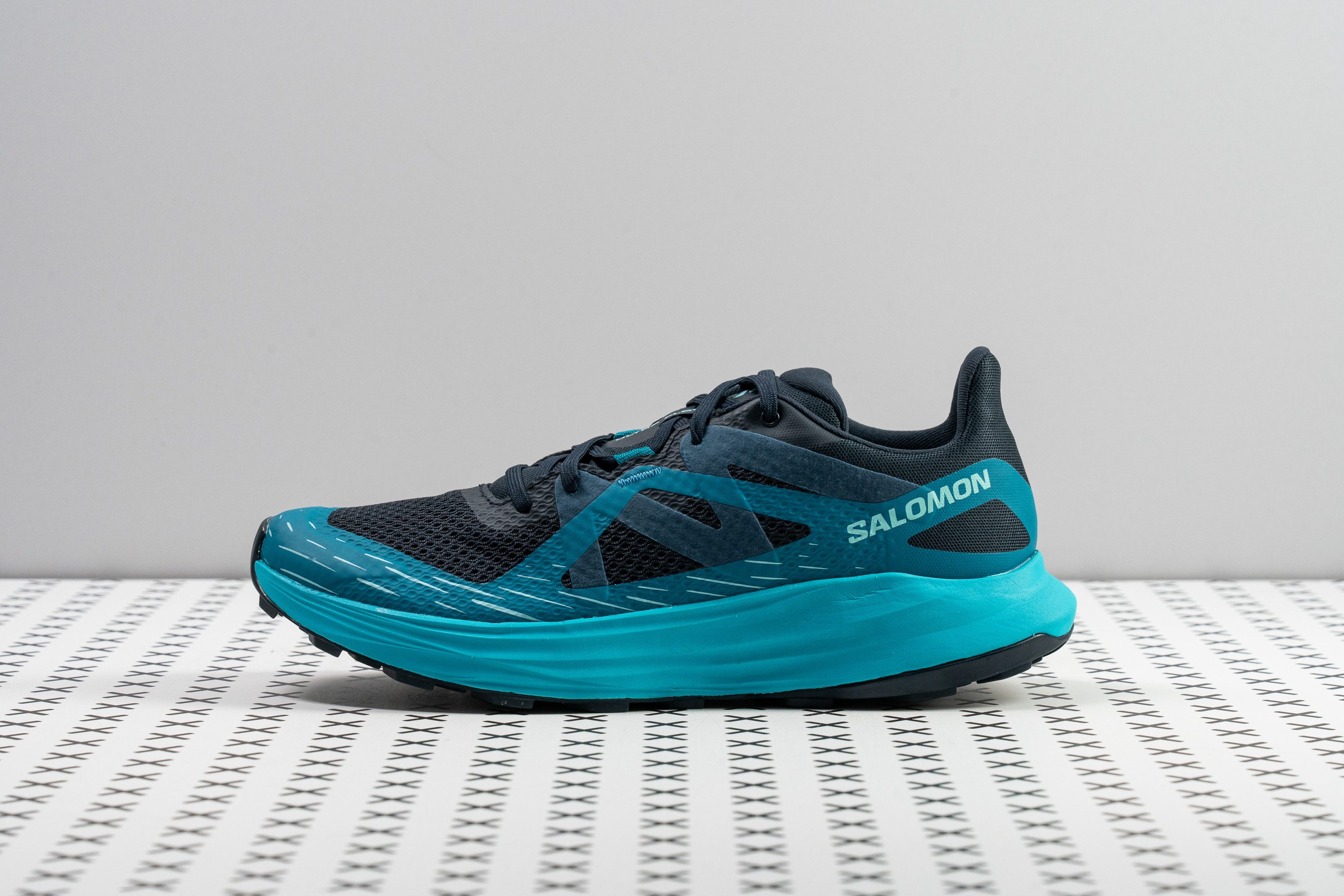
Size and fit
Size
Salomon Ultra Flow fits true to size (14 votes).
Width / Fit
Typical Salomon sizing tends to run snug, and that’s exactly what we found with the Ultra Flow. It’s not a problem—feet come in all shapes and sizes—but if you’re part of the wide-foot club, this one’s probably not for you.
Our first measurement landed right around the average at 95.0 mm, which isn’t that narrow. But let’s dig a bit deeper into the fit.
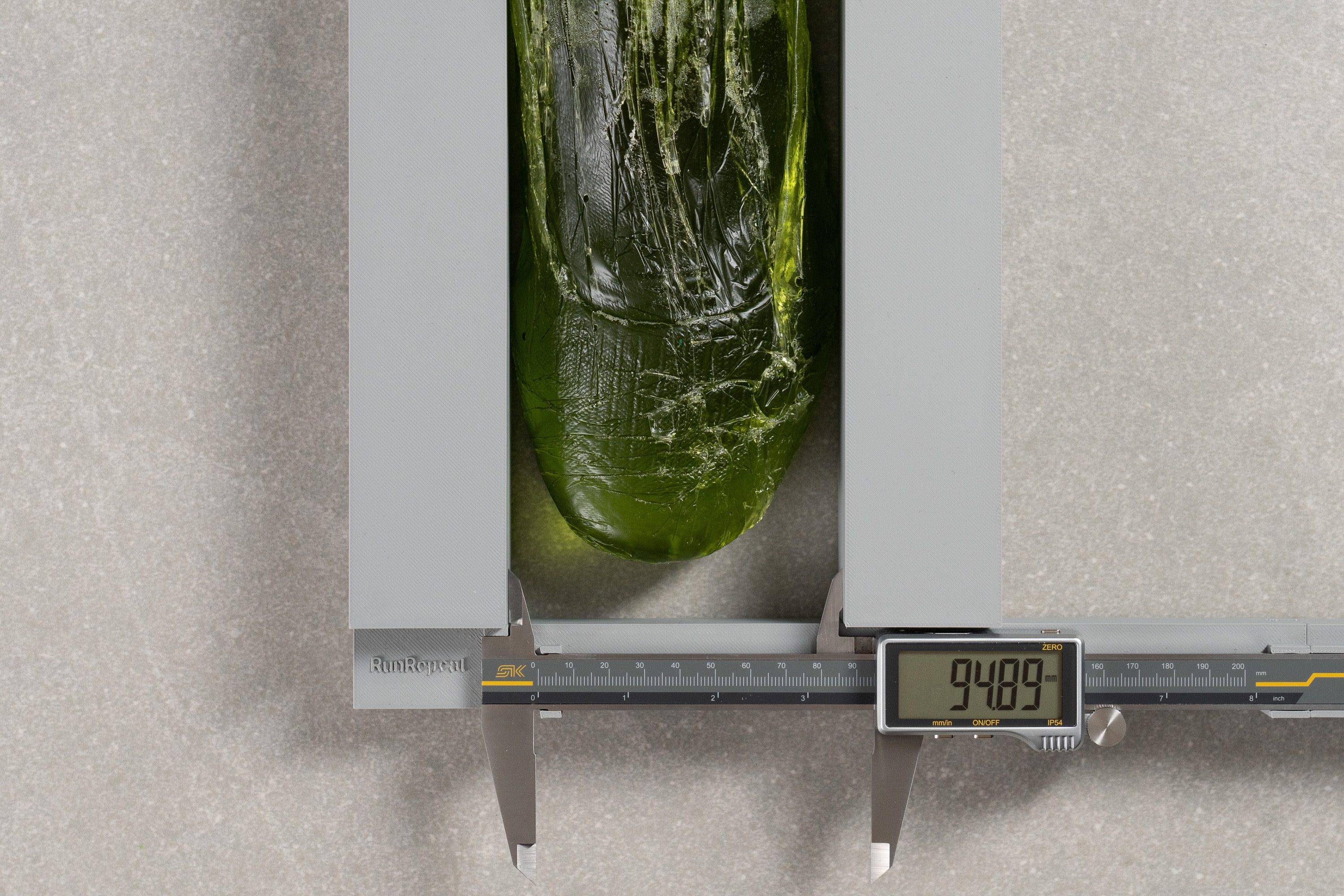
| Ultra Flow | 95.0 mm |
| Average | 95.6 mm |
Toebox width
What makes this shoe feel a bit more cramped than the average trail model is its toebox width. We measured just 71.2 mm, which falls well below the current lab average.
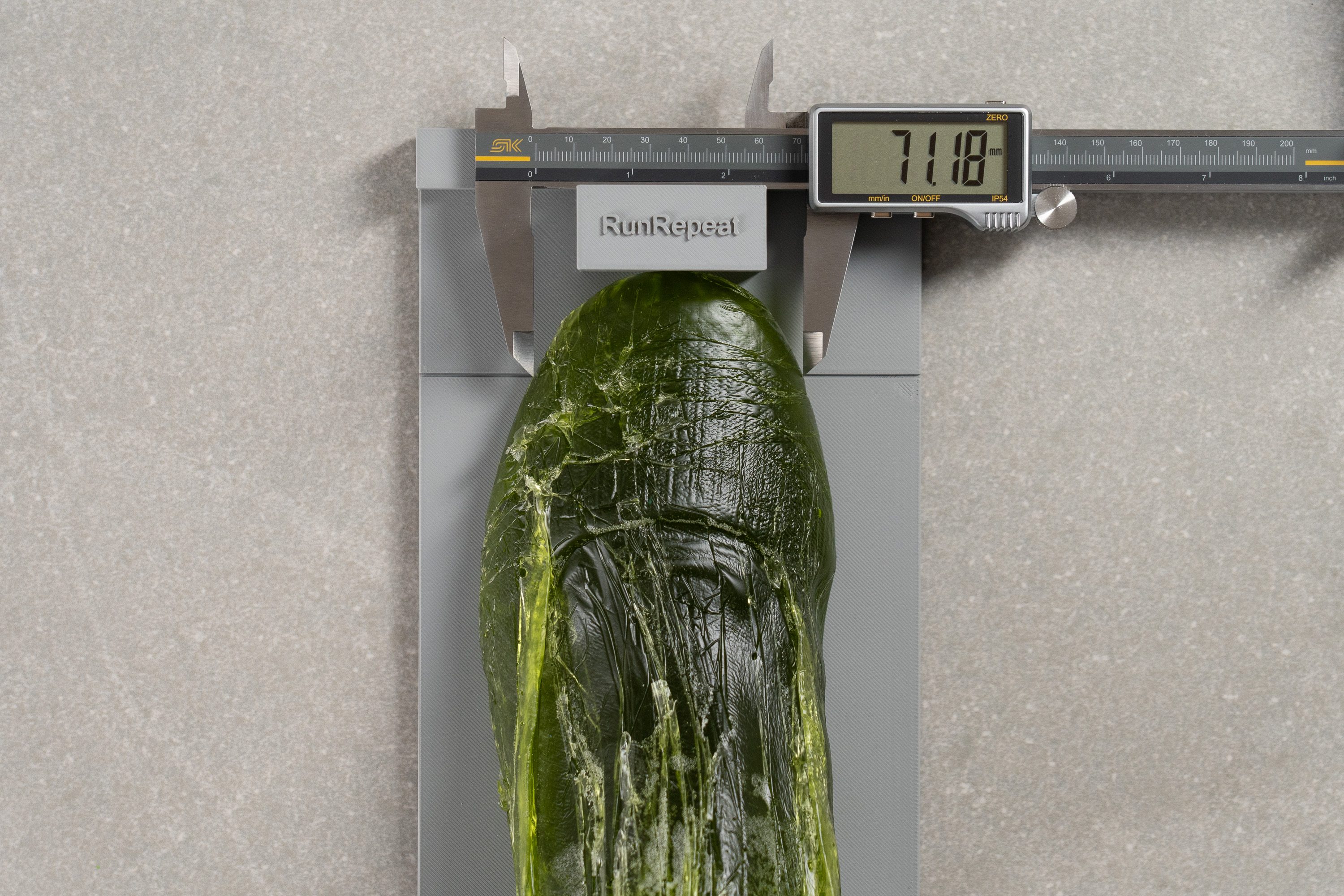
| Ultra Flow | 71.2 mm |
| Average | 74.6 mm |
Toebox height
The height feels spot-on at 27.6 mm, and we believe it won’t cause issues for almost anyone, even on day-long adventures.
The mesh adds a touch of stretch and isn’t overly rigid, but make sure you pick the right size.
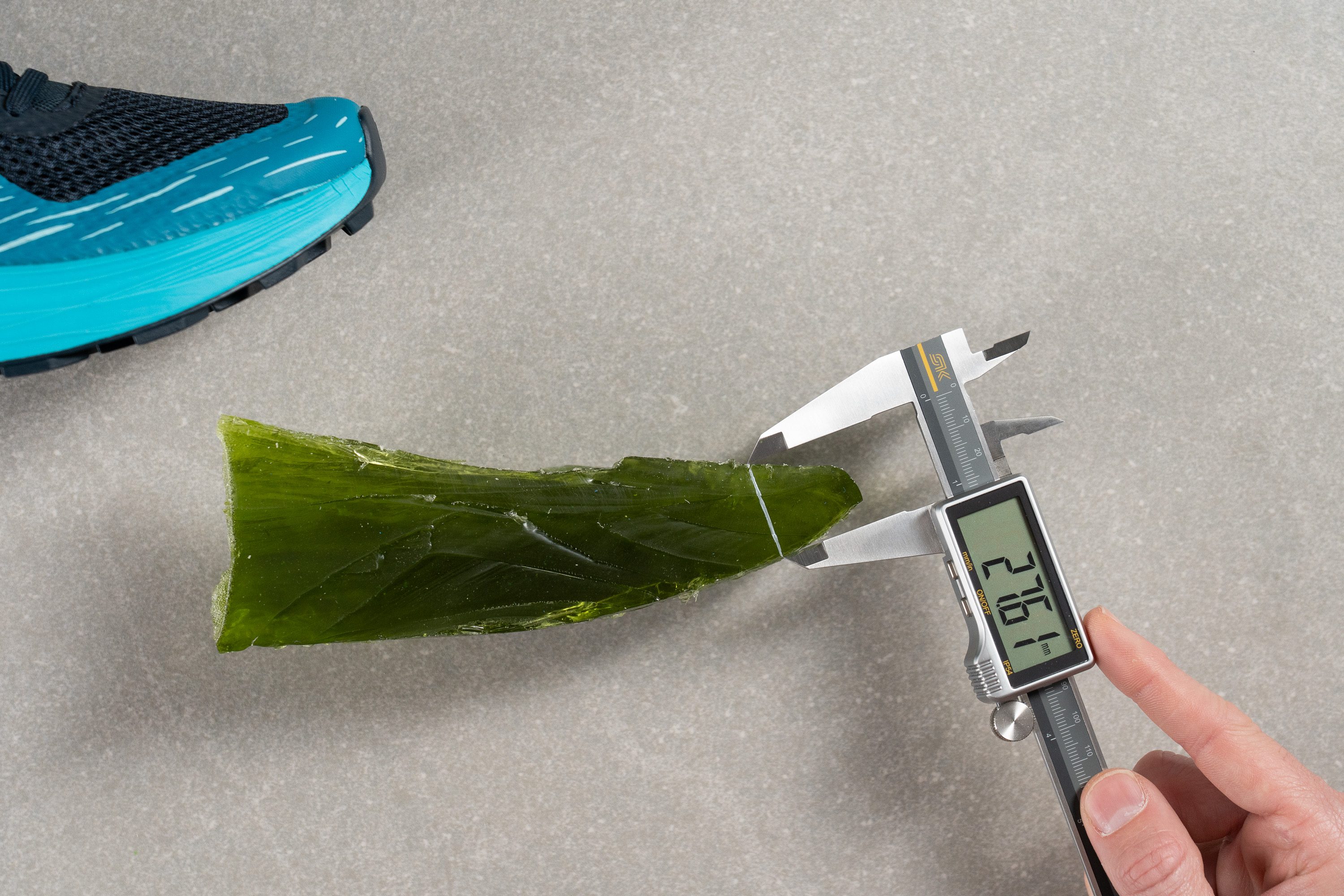
| Ultra Flow | 27.6 mm |
| Average | 27.0 mm |
Traction / Grip
Lug depth
The moment we picked up the shoes, it was clear they weren’t pure trail models but rather a door-to-trail option built for versatility across nearly any surface, including roads. That’s why we found small 2.8 mm lugs, any deeper and they’d feel awkward on hard ground.
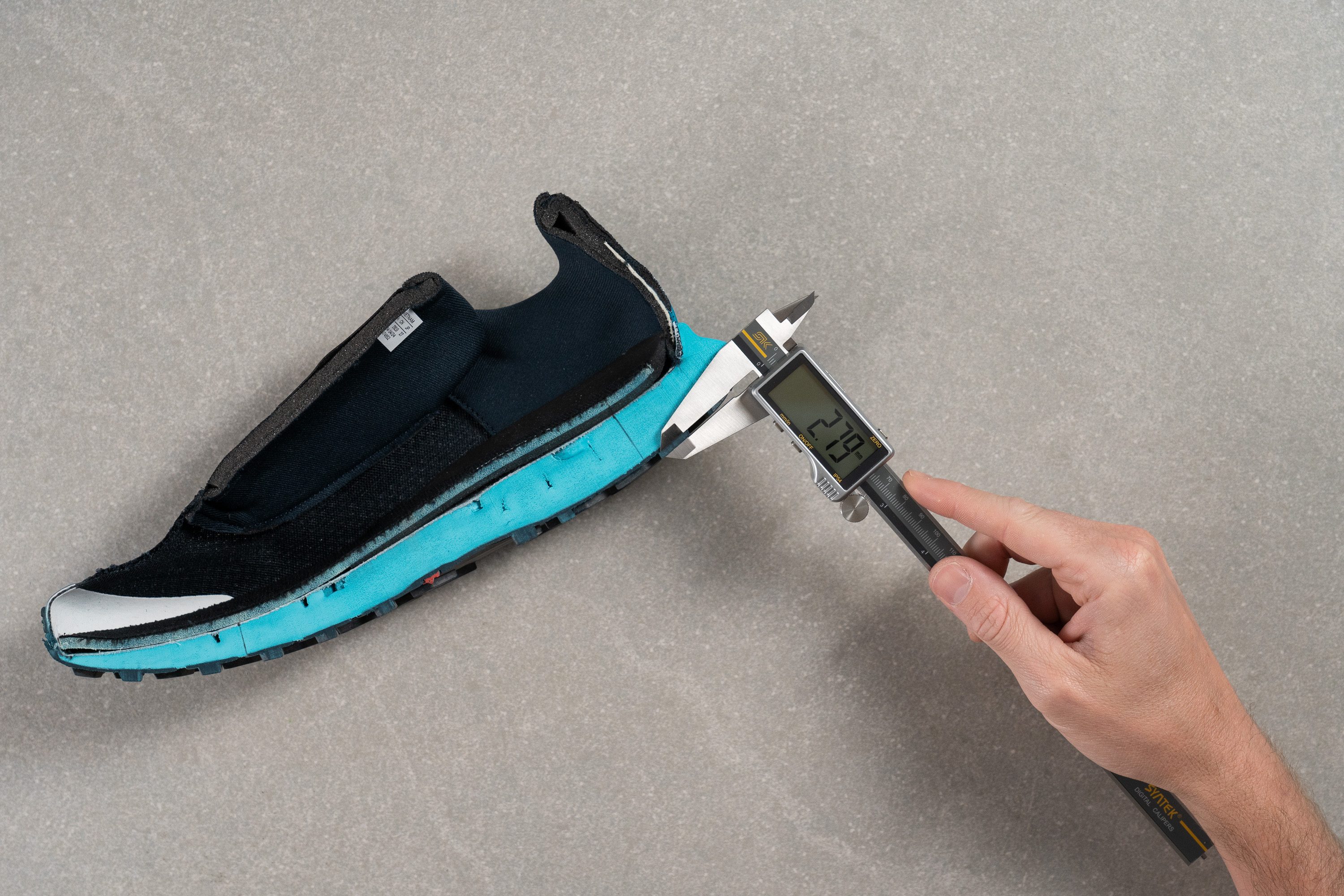
| Ultra Flow | 2.8 mm |
| Average | 3.5 mm |
Outsole design
The outsole of the Salomon Ultra Flow uses Salomon’s All-Terrain Contagrip rubber, applied through multiple independent lugs with diamond and arrowhead shapes. These rubber lugs are segmented across the entire outsole and laid out in opposing directions from heel to toe.
We confirmed that there are no midsole foam exposures, which is cool. Rubber coverage is complete from heel to toe. However, a series of horizontal and V-shaped blue cutouts are embedded between the lugs in order to improve flexibility.
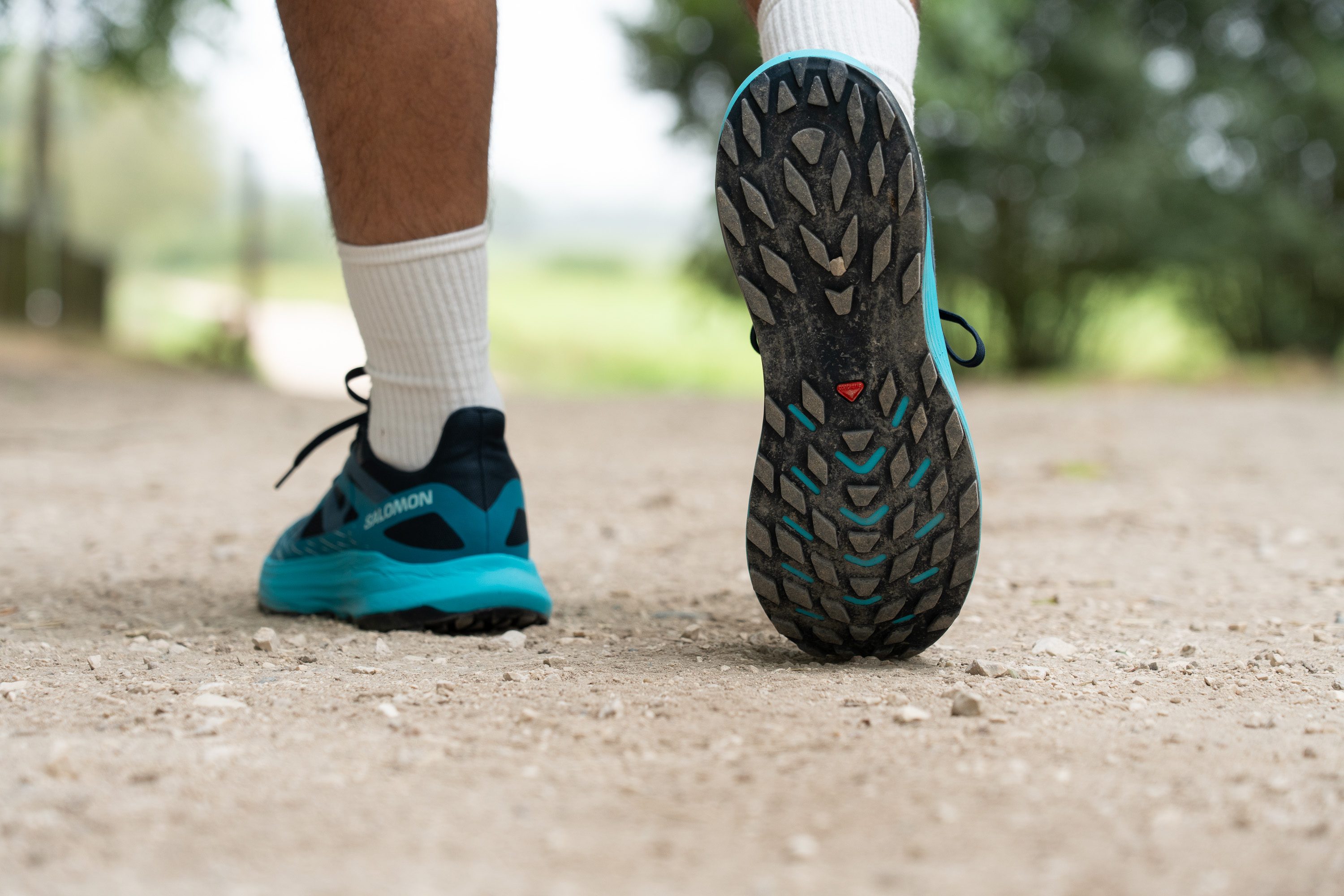
Flexibility / Stiffness
And flexible it is, scoring just 11.0N in our 30-degree bend test. Those cutouts in the outsole combined with the moderate forefoot stack height promote a more natural ride, making this shoe a solid option for hiking as well.
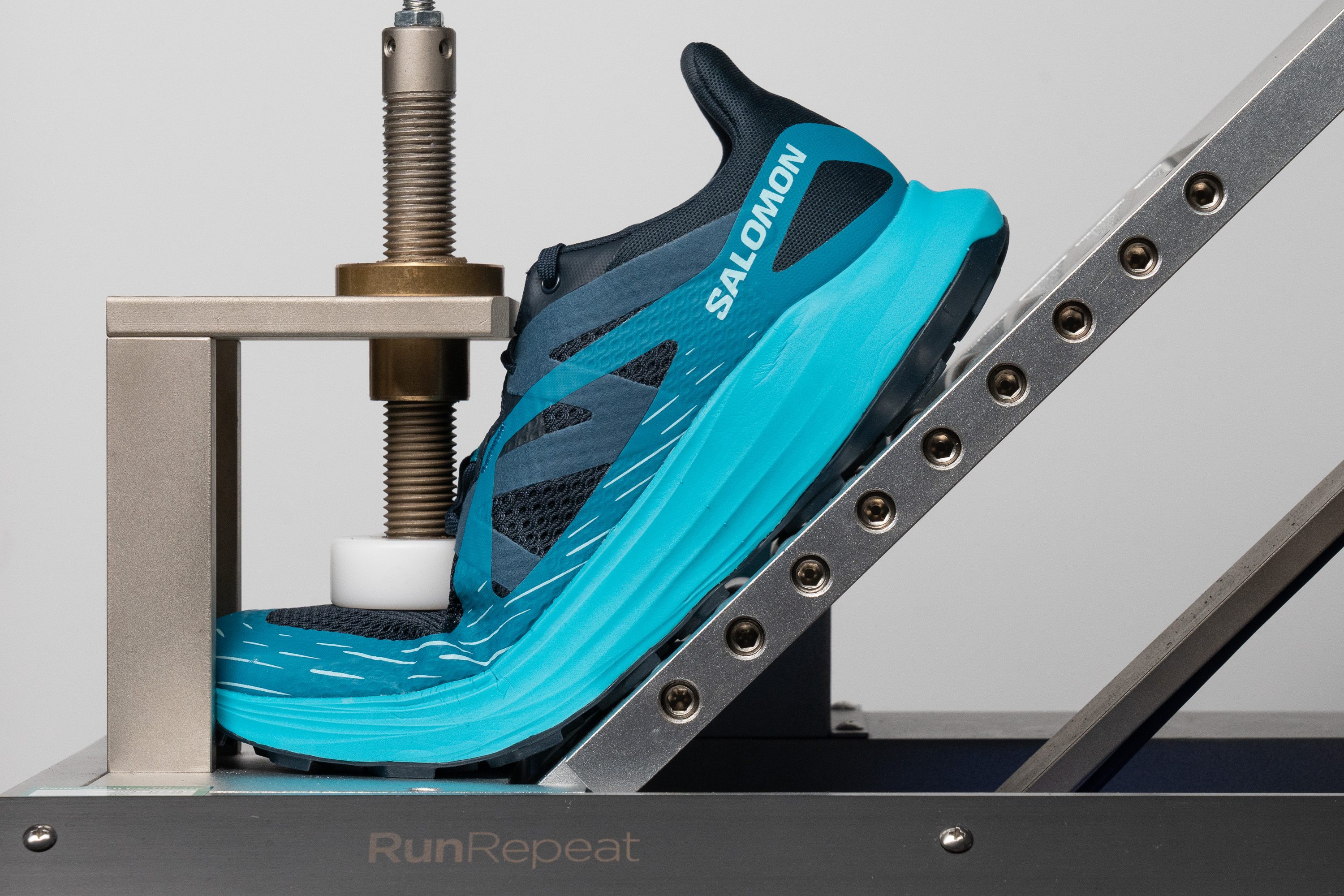
| Ultra Flow | 11.0N |
| Average | 14.6N |
Weight
One of the standout features of the Ultra Flow compared to many competitors is its weight. At just 9.1 oz or 258g, it’s a great choice for runners who can’t stand the sluggish feel of bottom-heavy shoes that are becoming more common on the market.
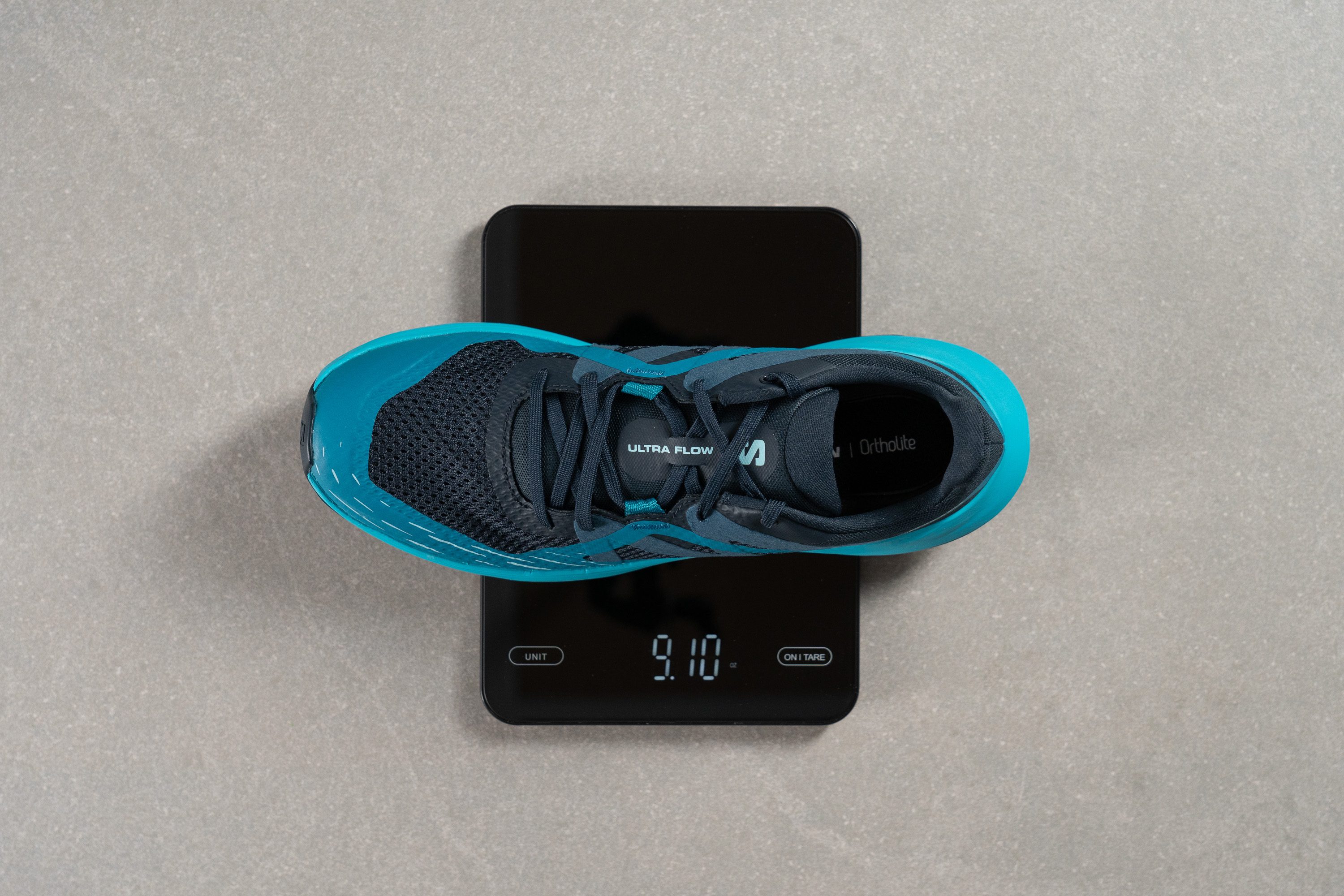
| Ultra Flow | 9.1 oz (258g) |
| Average | 10.2 oz (289g) |
Breathability
The Salomon Ultra Flow is a great example of how a wallet-friendly trail shoe can feature an upper that ticks all the boxes: durability, comfort and breathability.
We began by using our custom 3D-printed piece to direct smoke into the toebox, testing its heat expulsion compared to other shoes in our lab. The result was impressive, earning a 4/5 score.
A simple light test revealed a thin toebox material complemented by reinforcements around key areas to prevent early wear.

Under our digital microscope, we confirmed that Salomon used a 3D mesh upper commonly seen in road shoes, with abundant ventilation holes and a dual-layer construction.

We believe more brands should take this approach especially for road-to-trail shoes.
While thick, durable uppers often lack breathability and ultra-thin uppers usually lack durability, this one performs well in all scenarios by combining airy zones with heavily reinforced areas where it matters most.
| Ultra Flow | 4 |
| Average | 3.2 |
Stability
Lateral stability test
The Ultra Flow provides a slight touch of stability for neutral runners, but we wouldn’t recommend it for runners who genuinely need support due to its compact dimensions. It’s more of a classic shoe, offering a fun and agile ride at the expense of a narrower landing platform.
Torsional rigidity
While the Ultra Flow is flexible in terms of longitudinal bending, we were surprised to record a 4/5 in our torsional rigidity test. That’s slightly more than expected for a shoe of this kind, but on the upside, it does contribute an extra touch of stability.
| Ultra Flow | 4 |
| Average | 3.6 |
Heel counter stiffness
The heel counter is stiffer than we expected, likely intended to provide a slight stability boost for those landing on this part of the foot. However, for walking or hiking, a more comfortable and flexible counter would have been preferable.
| Ultra Flow | 4 |
| Average | 3 |
Midsole width - forefoot
We previously mentioned the compact dimensions of the Ultra Flow, but here are the actual measurements: at 111.9 mm in the forefoot, it falls below the average, keeping agility in its DNA.
As this type of shoe fades from the market, it’s great to see it here!
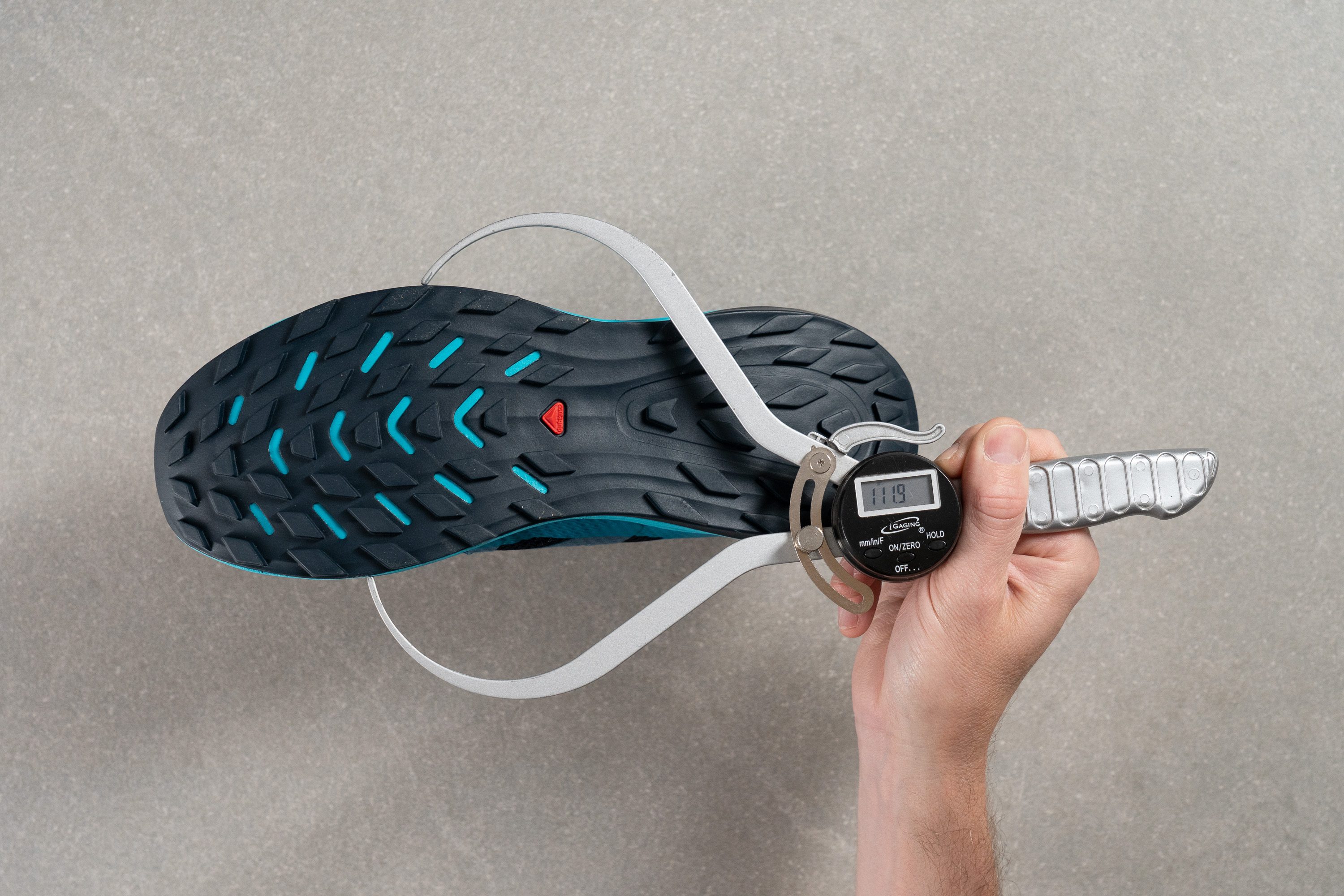
| Ultra Flow | 111.9 mm |
| Average | 112.8 mm |
Midsole width - heel
The heel measured 92.9 mm, further highlighting that, despite Salomon’s misleading official drop, this shoe is designed to work well for heel strikers and offer sufficient support.
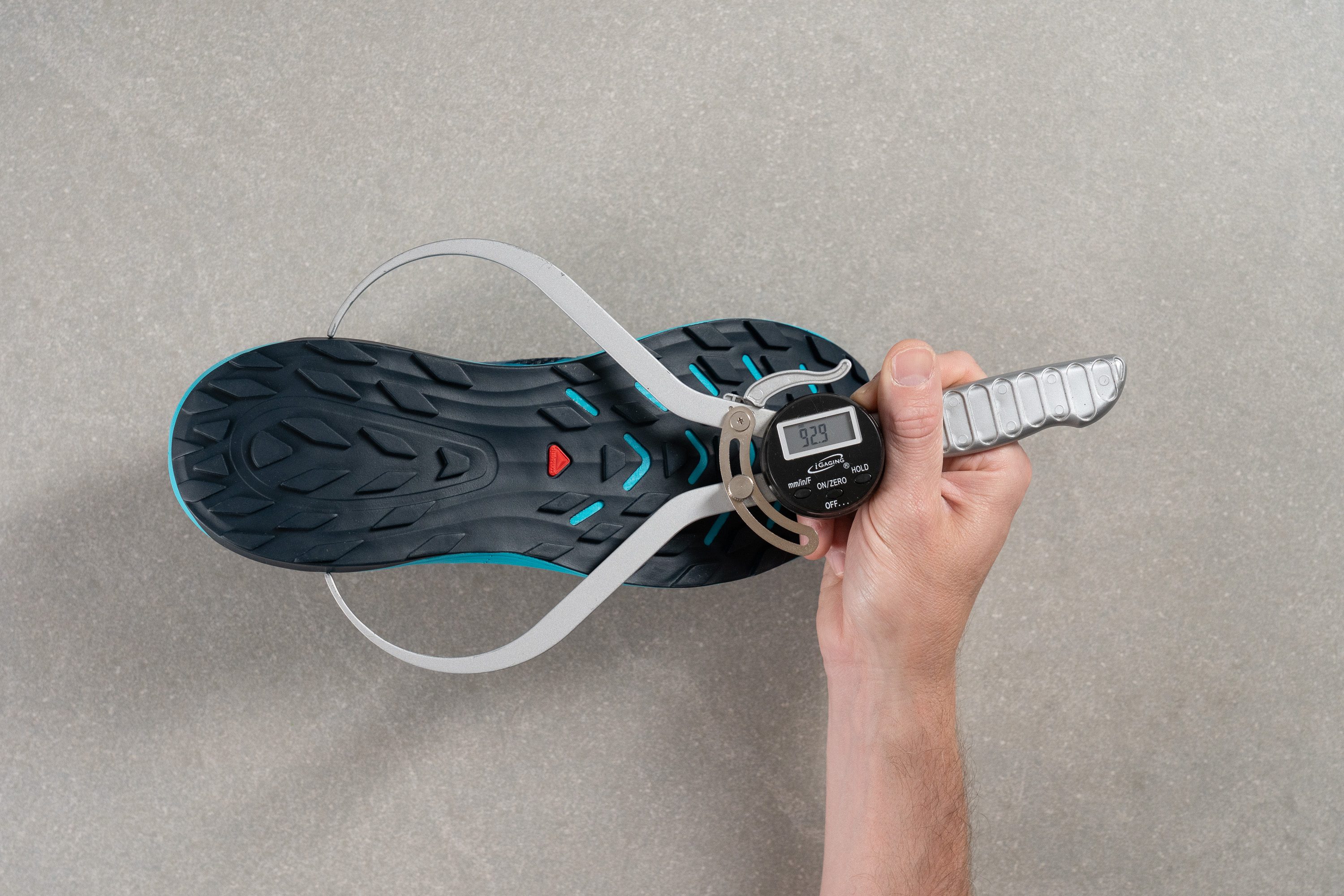
| Ultra Flow | 92.9 mm |
| Average | 89.8 mm |
Durability
Toebox durability
Salomon put considerable effort into protecting the Ultra Flow’s toebox, making it one of the most rugged trail shoes we’ve tested in a while. That’s how it earned a strong 4/5 in our first durability test.
| Ultra Flow | 4 |
| Average | 3.1 |
Heel padding durability
The heel counter lining also performed well, earning a near-average 3/5 and ensuring it won’t develop a hole too early in its lifespan.
| Ultra Flow | 3 |
| Average | 3 |
Outsole durability
Our third Dremel test left 1.0 mm of damage. While this isn’t a concerning result or a dealbreaker, given the shallow lugs on this shoe, we had hoped for a slightly better outcome to enhance the durability of the All-Terrain Contagrip rubber.
| Ultra Flow | 1.0 mm |
| Average | 0.9 mm |
Outsole thickness
The outsole is quite thin at 1.2 mm, helping reduce weight and improve comfort on roads, in line with its versatile, multi-surface design. While it may not be ideal for durability, it’s clear why Salomon chose this approach.
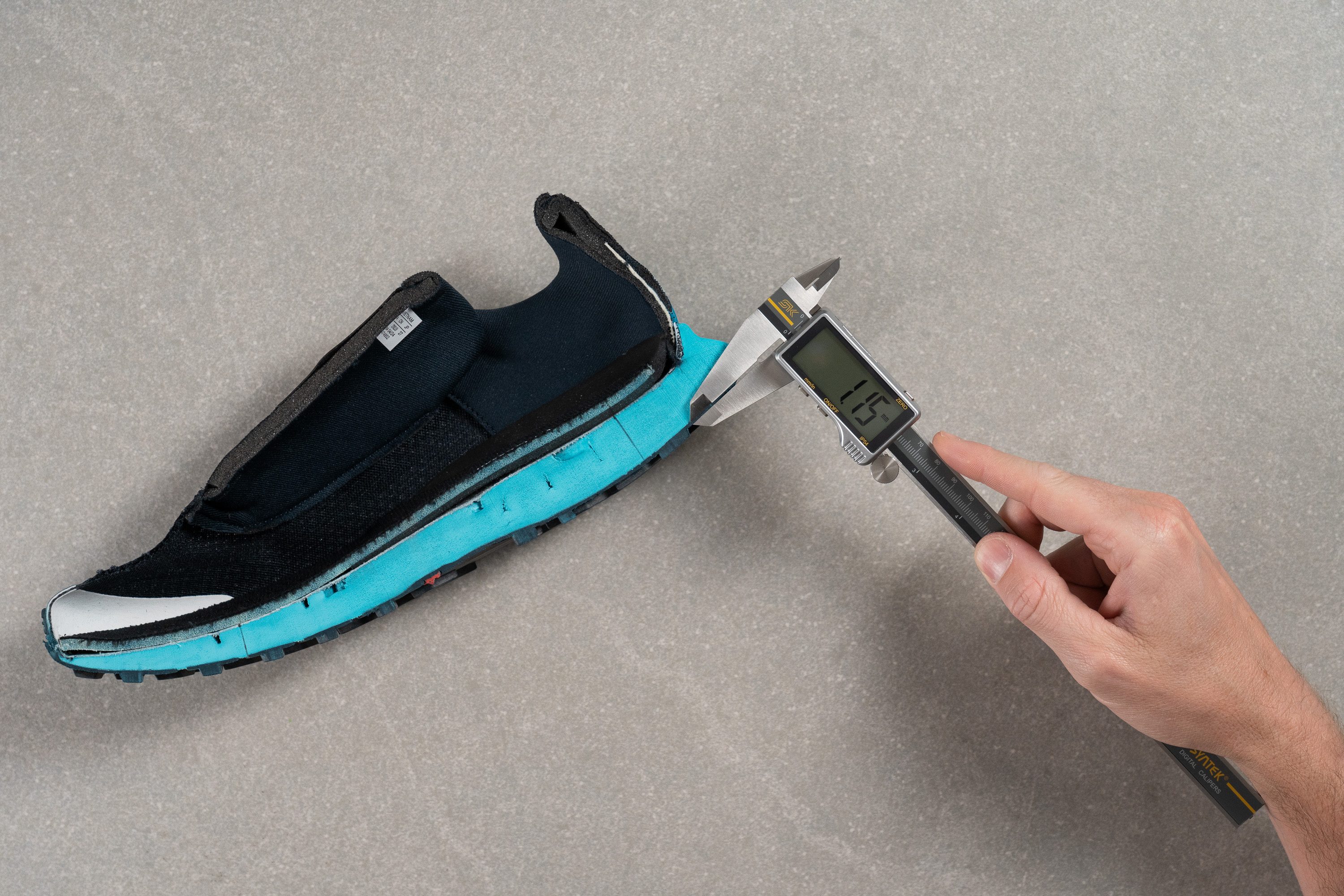
| Ultra Flow | 1.2 mm |
| Average | 2.2 mm |
Misc
Insole thickness
One unique feature of the Ultra Flow is its thick insole, which we measured at 7.3 mm... almost double the average we see in the lab! This extra thickness makes it feel like two insoles fused into one.
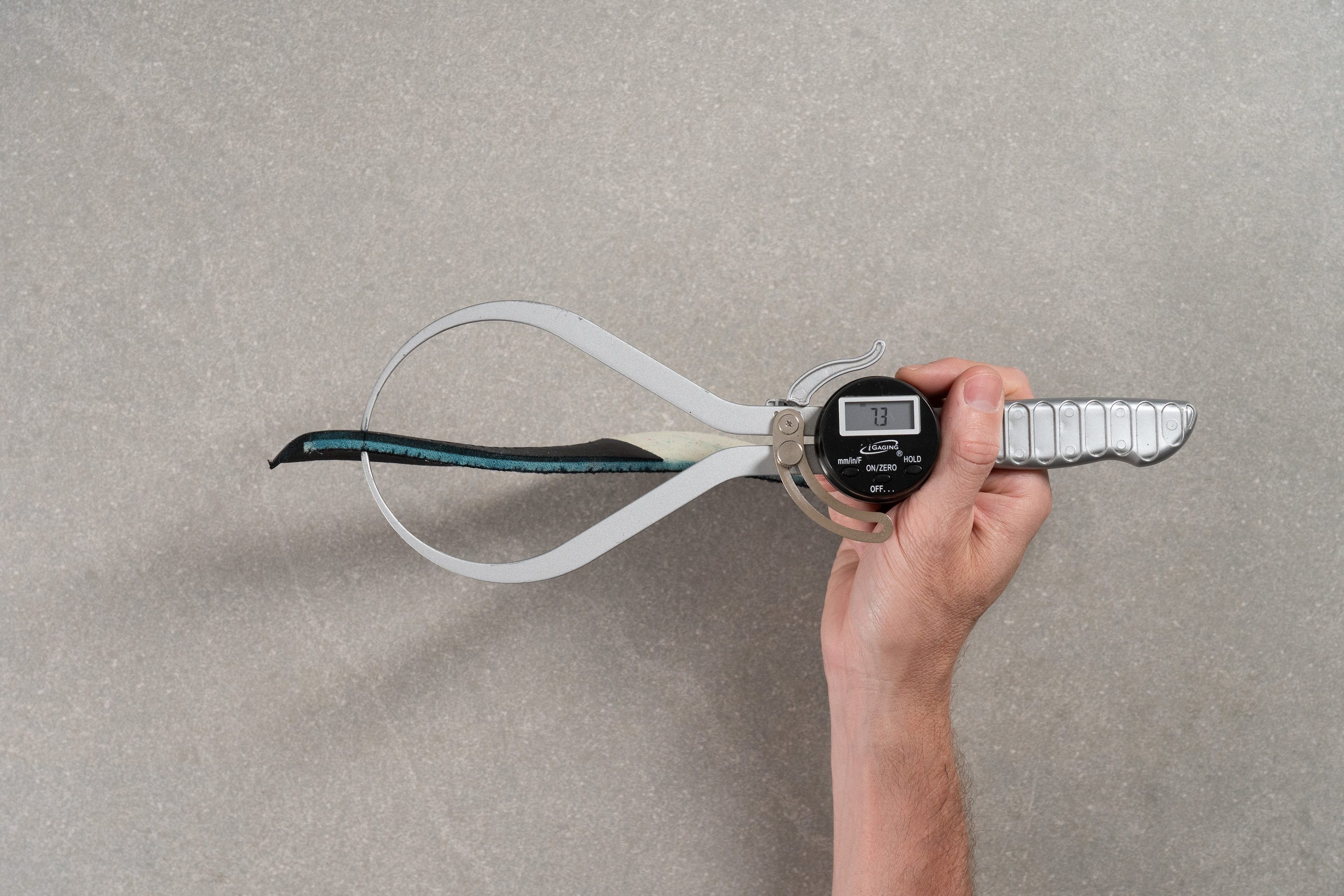
| Ultra Flow | 7.3 mm |
| Average | 4.7 mm |
Removable insole
The thick Ortholite insole is removable, which is a plus. This allows you to swap in a thinner one for increased ground feel or to create extra space in the toebox.
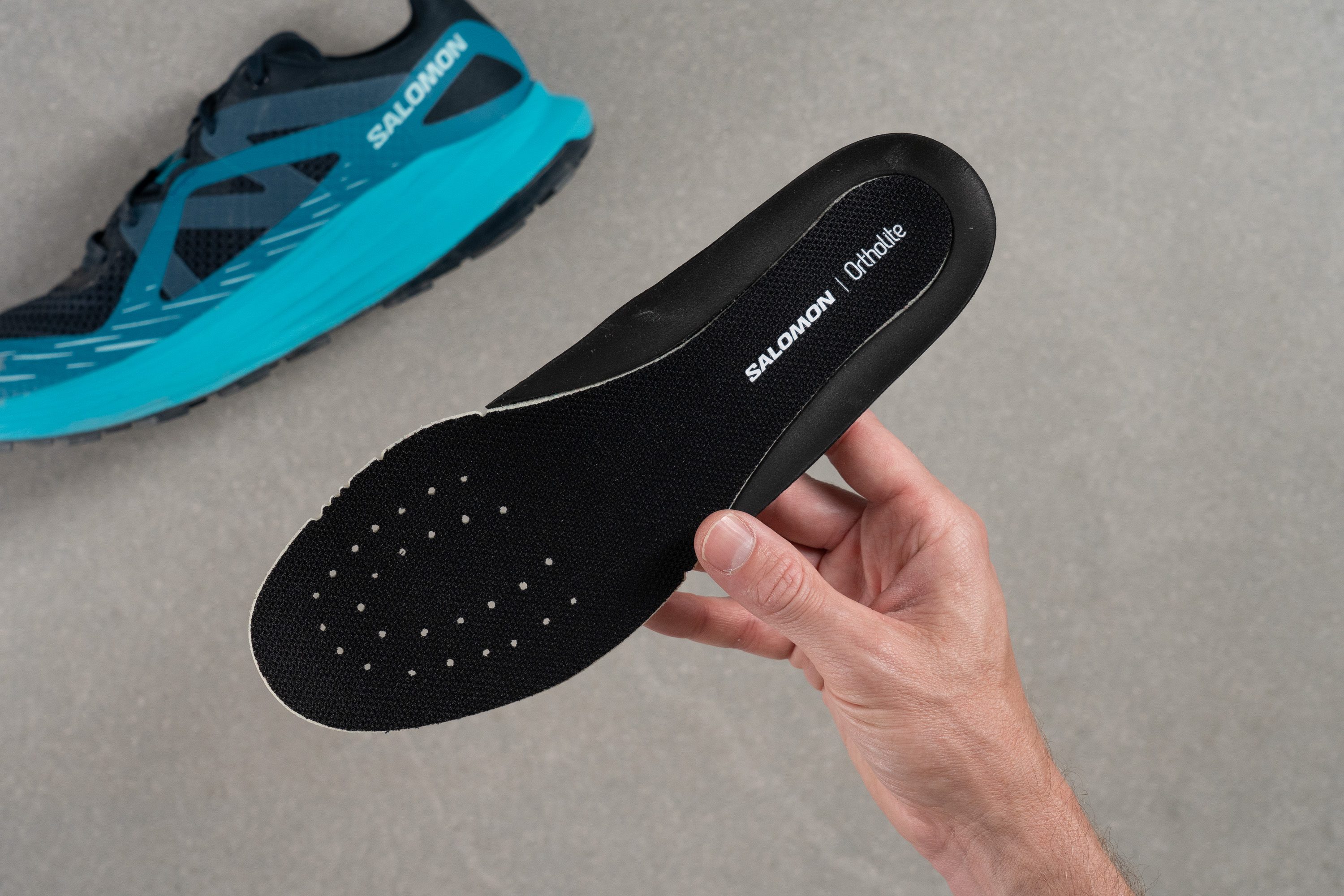
| Ultra Flow | Yes |
Midsole softness in cold (%)
We placed the Ultra Flow in the freezer for 20 minutes and then retested the foam’s softness. The result showed a 26% increase, which is right around the average and exactly what we expected.
| Ultra Flow | 26% |
| Average | 26% |
Reflective elements
We couldn’t find any reflective elements on the Ultra Flow, which was a bit disappointing. It’s not a deal-breaker, but if you often run in low-light conditions, this omission won’t be to your liking.
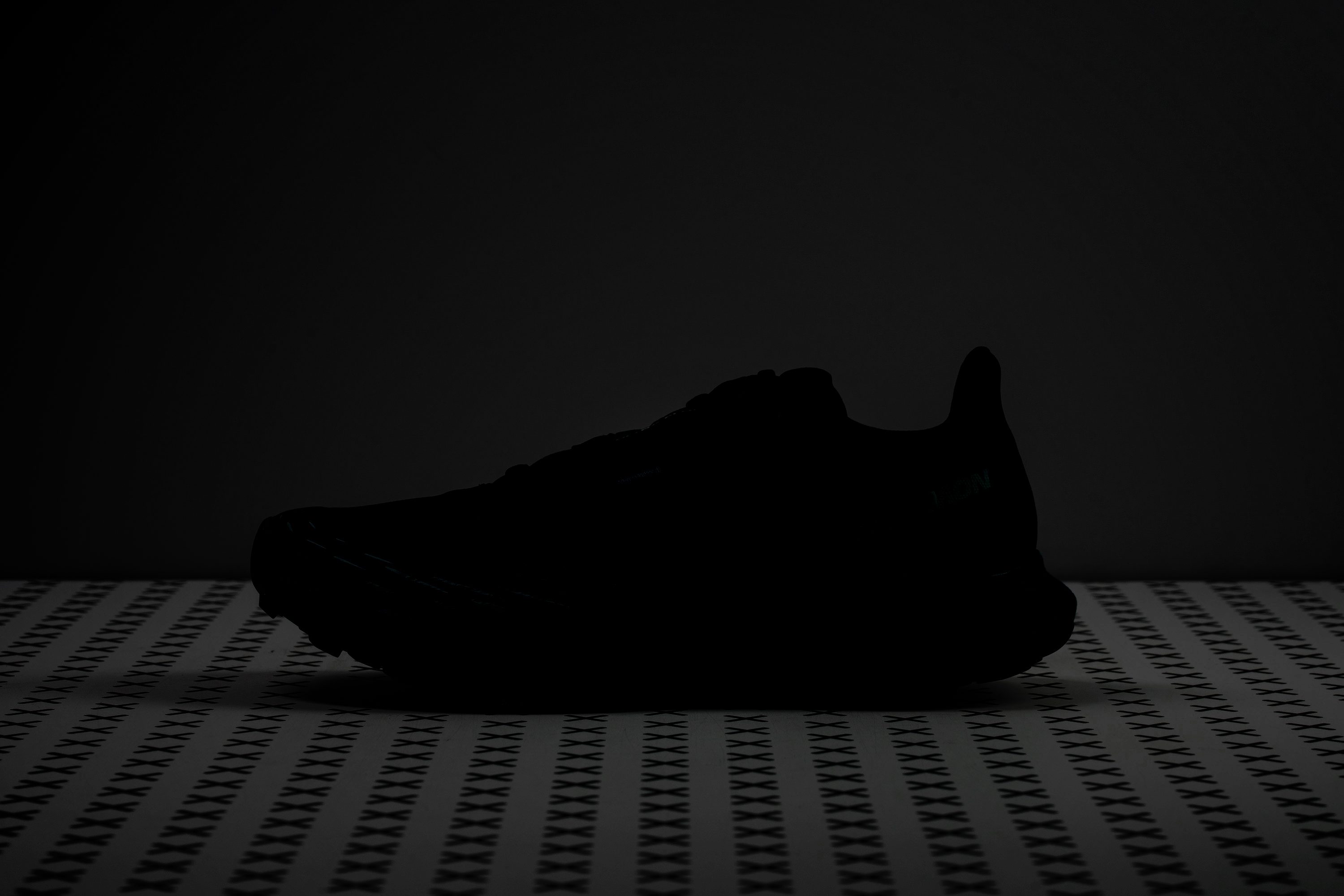
| Ultra Flow | No |
Tongue padding
We were surprised to find the tongue packed with 8.6 mm of padding. It's a sharp contrast to the lightweight focus seen in the rest of the shoe. It does, however, add plenty of comfort, especially for daily wear or hiking.
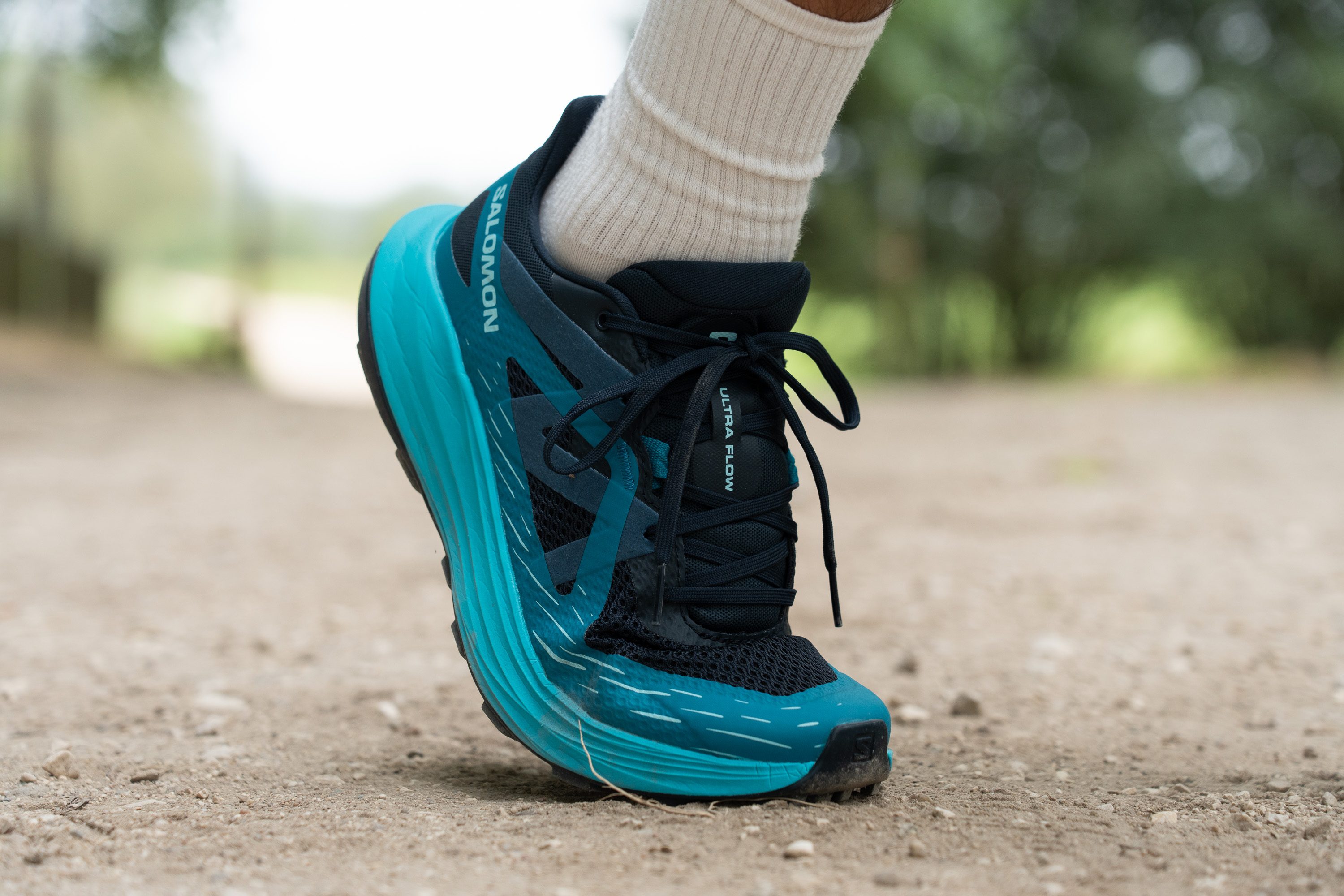
The lacing system is well-executed, using standard punched eyelets except for one in the middle of the instep, where a loop helps manage pressure more evenly in that area. Definitely a nice touch for a shoe that doesn’t come with a premium price tag.
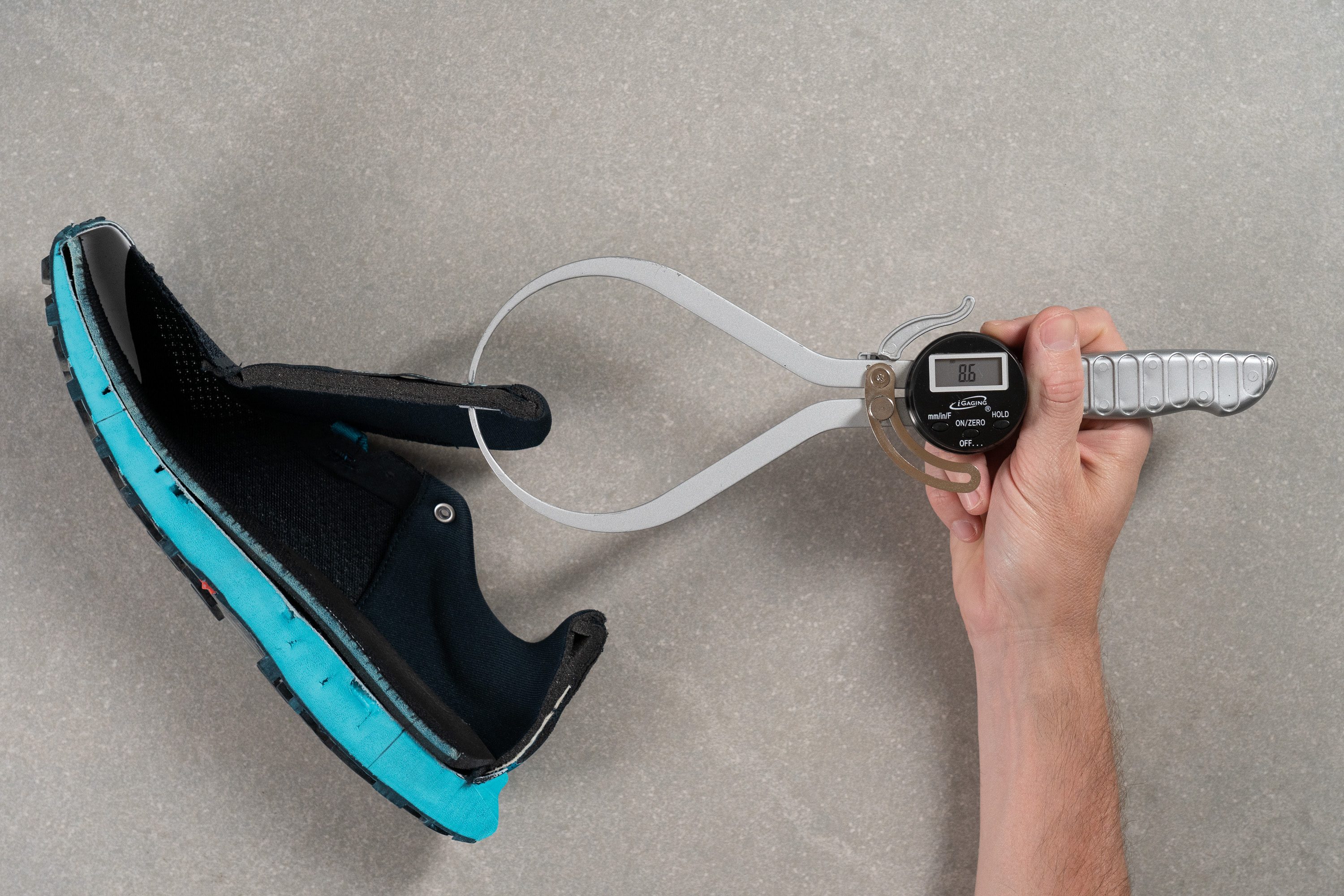
| Ultra Flow | 8.6 mm |
| Average | 6.4 mm |
Tongue: gusset type
The tongue is not gusseted, which reflects the true nature of the Ultra Flow: it’s not a pure trail shoe, but a hybrid designed to handle a wide range of situations at an affordable price. And lower prices inevitably come with some compromises.
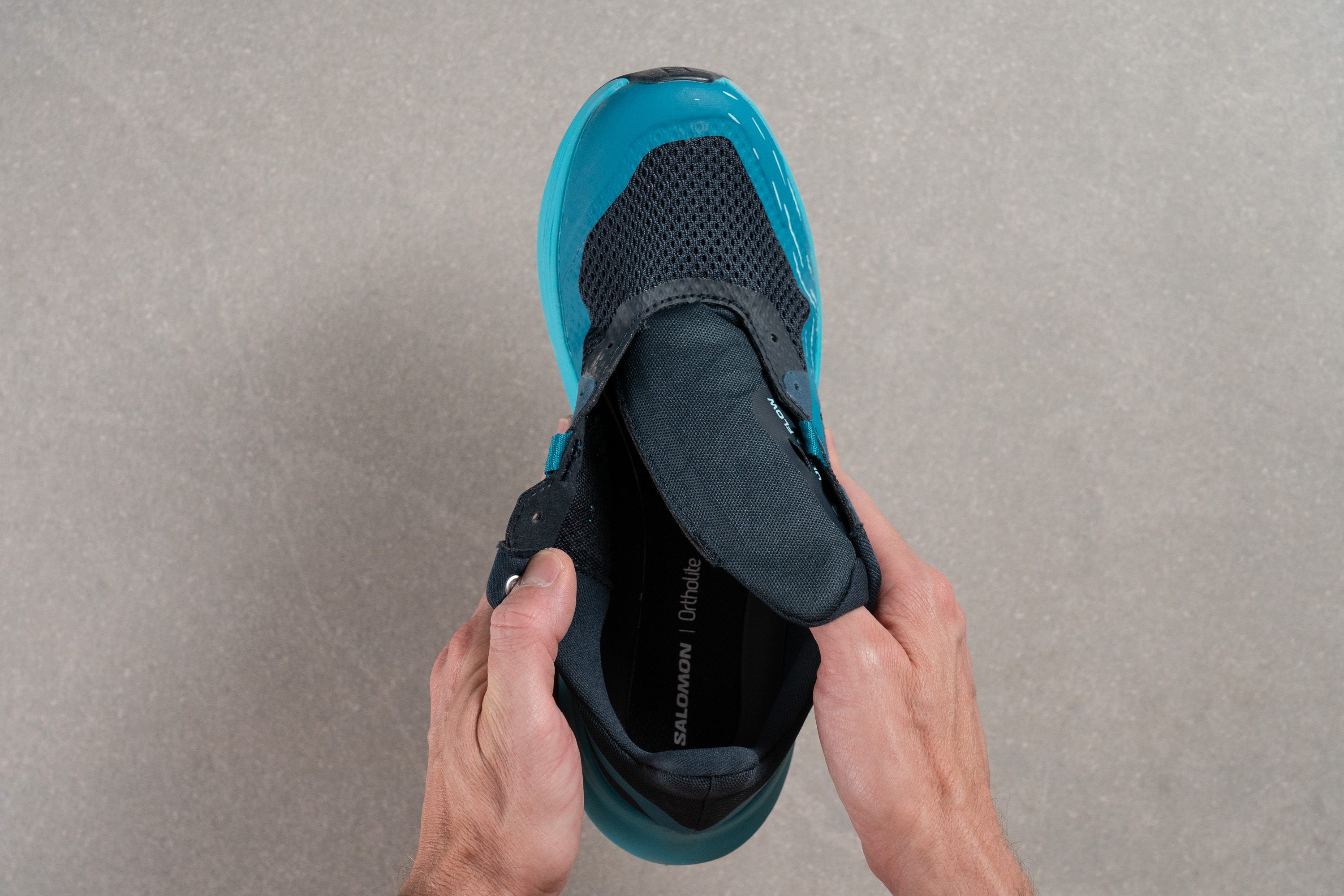
| Ultra Flow | None |
Price
One of the biggest reasons to choose the Ultra Flow is its price. It comes in cheaper than most road-to-trail competitors, and its versatility makes it a great option for those wanting one shoe for running, hiking, or even traveling.
| Ultra Flow | $120 |
| Average | $152 |
Heel tab
The heel skips the usual finger-loop pull tab found on most trail shoes, opting instead for an extended heel collar reminiscent of many HOKA road running models.

| Ultra Flow | Extended heel collar |

